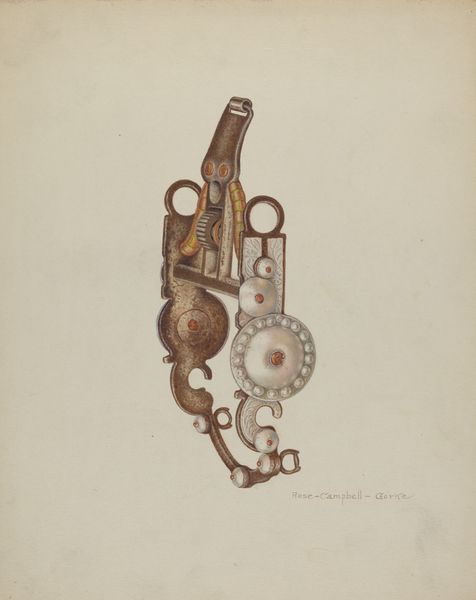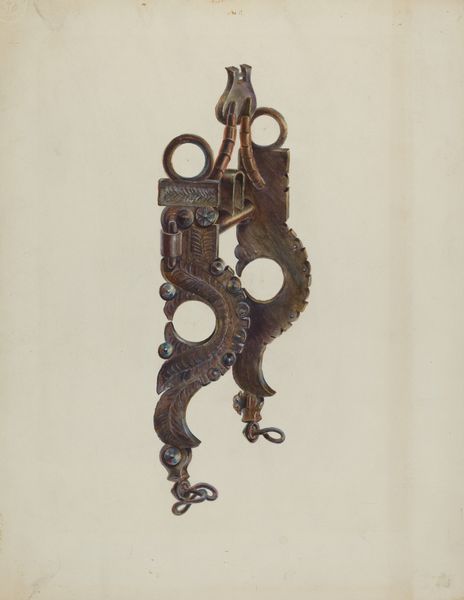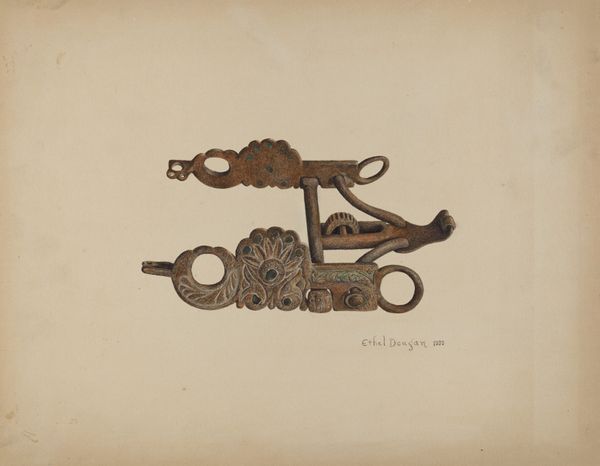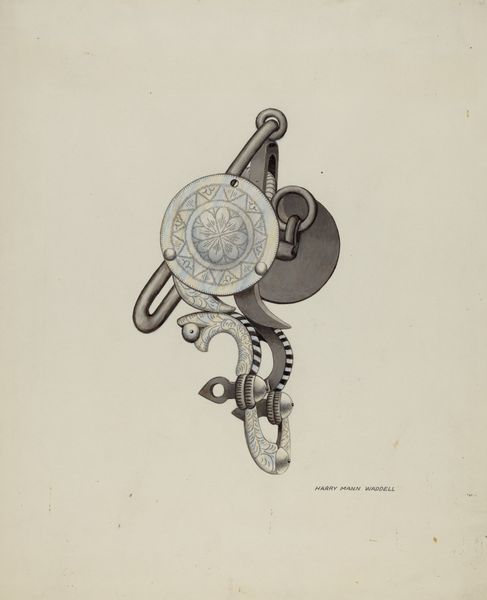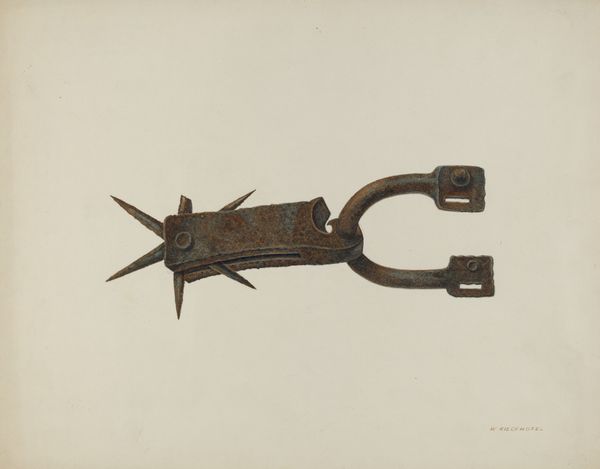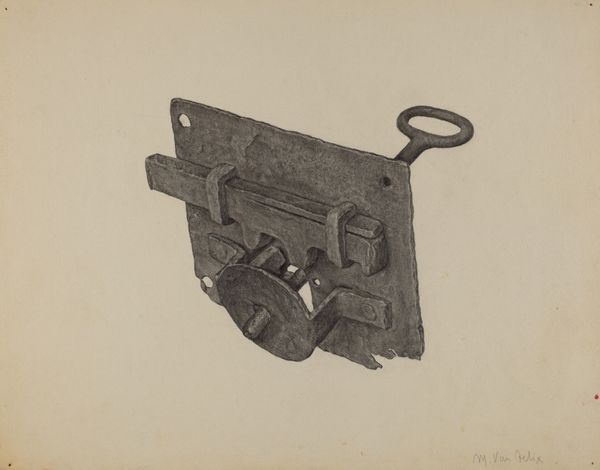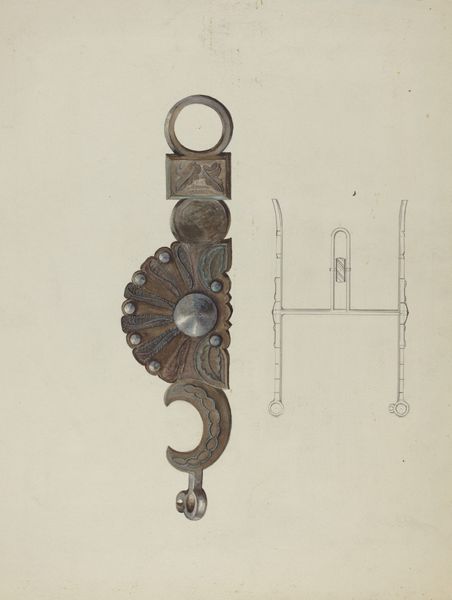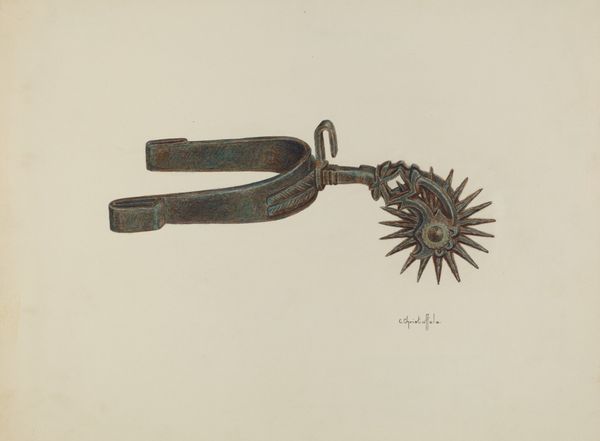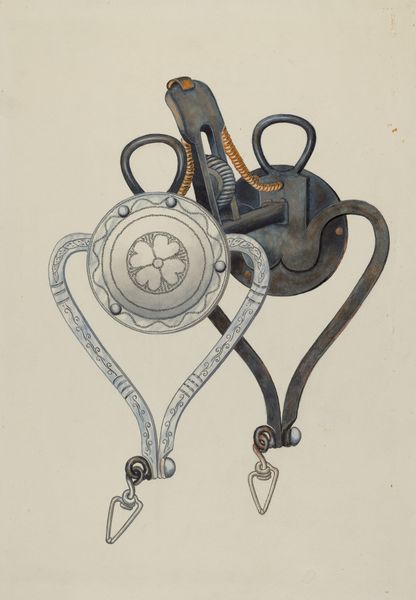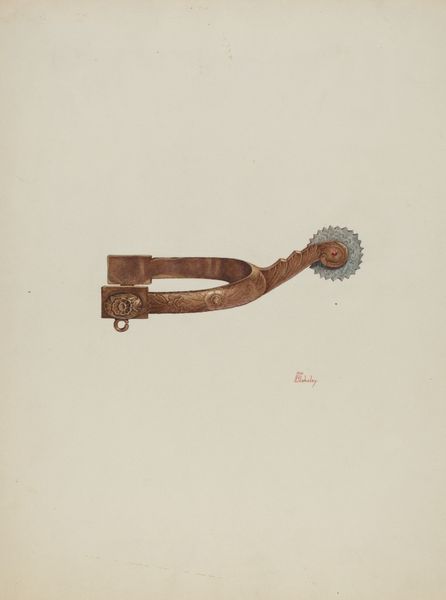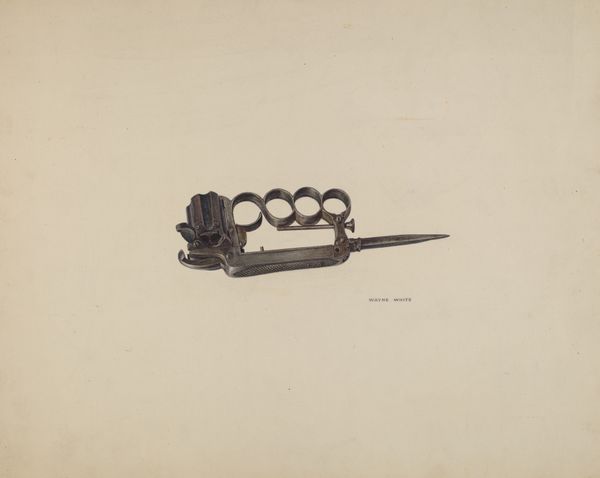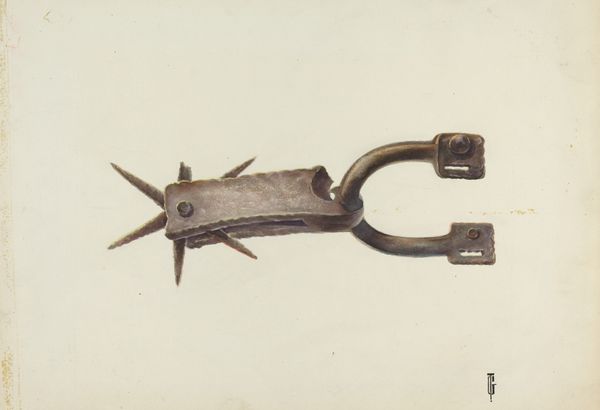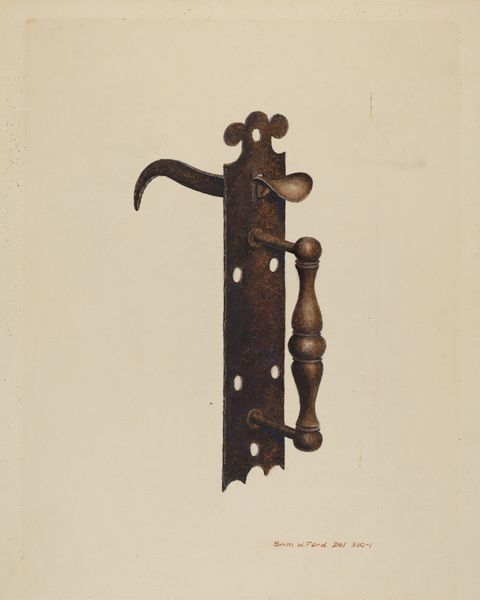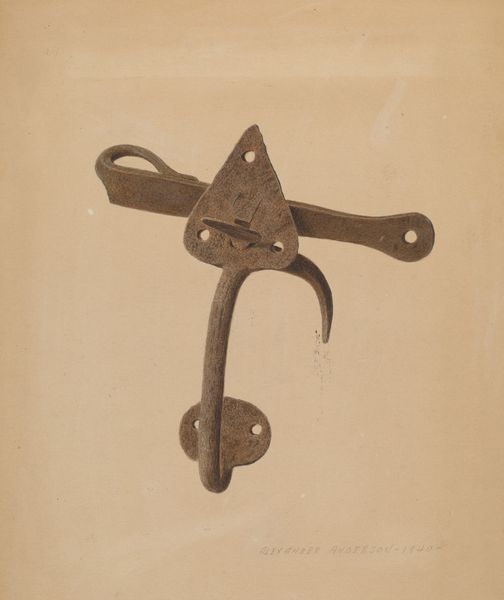
drawing, watercolor
#
drawing
#
watercolor
#
watercolour illustration
#
watercolor
Dimensions: overall: 35.4 x 28 cm (13 15/16 x 11 in.) Original IAD Object: 9 1/2" long; 5 3/4" wide
Copyright: National Gallery of Art: CC0 1.0
Curator: At first glance, the rendering of this bit strikes me as a still moment—a careful, almost loving depiction. Editor: I find the overall visual impact strangely unsettling. It’s so stark, almost forensic. Is that really how we are meant to consider it? Curator: We’re looking at "Bit," a watercolor and drawing created around 1938 by Rose Campbell-Gerke. Note the precise details, like the swirling motifs and various shapes that compose the artwork. Don't you find yourself considering that these details evoke more than simple control? Editor: But what is that control? It’s undeniable, and perhaps beautiful in its own way, yet inherently steeped in the legacy of animal domination within this image. Does its creation during the late 1930s intensify the implications here? Curator: The design here speaks to a whole visual language. You see echoes of early Western art styles in the symmetrical rendering, an understanding of form through shadow and light, and a nod to the decorative embellishments found in equestrian artifacts. It tells us about our evolving connection to these animals. Editor: True, it references our connection with them. What about their experiences within these historical contexts? Think about it—while beautiful, such an implement is ultimately intended to control a living being and dictate their movement, a sort of subjugation. And what is remembered about the American West? Curator: Symbolically, it's about something beyond physical domination—the bit is more than a mere tool; it reflects something far deeper about our nature. It carries that same fascination for humans, the dance between constraint and freedom we impose on ourselves. Editor: But is it helpful to ignore its physical imposition on another creature? That it stands to become a decorative piece in an exhibition while horses carry their stories to an unacknowledged past? Is beauty enough? Curator: No, beauty isn't everything, but it prompts these considerations. Campbell-Gerke captured something in that delicate line work and those tonal gradients—a whole universe of historical human actions crystallized in metal. It asks a more complex question than cruelty. Editor: Perhaps...I am still thinking through the ways it reflects back on ourselves—the stories and voices not readily visible. Curator: Well, maybe the power lies precisely in the silent dialogues the artwork demands, sparking new narratives from this artifact from our shared past.
Comments
No comments
Be the first to comment and join the conversation on the ultimate creative platform.
